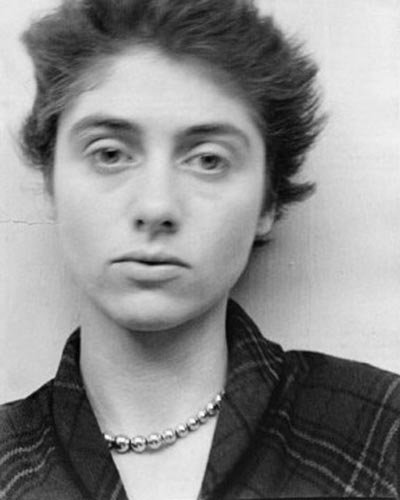Born: March 14, 1923, New York, U.S.
Died: July 26, 1971, New York City

Diane Arbus was an American photographer known for her black-and-white portraits of individuals on the fringes of society. The alienation and inner torment depicted in her photographs mirrored both her own inner feelings and the social turmoil in the United States during the late 1960s and early 1970s. Arbus produced the haunting images of transvestites, midgets, nudists, and on occasion, celebrities.
Arbus often sharpened the facial features of her subjects, and thereby intensified their stark expressions by using a flash in broad daylight. Her use of a wide-angle lens conveyed the social isolation of her subjects by making the space around them seem larger. In Child with a Toy Hand Grenade, New York (1962), her techniques transform a moment of presumably innocent play into a frightening image in which the boy’s frozen pose seems to reveal malevolence. In Masked Woman in a Wheelchair, Pa. (1970), Arbus evokes both sympathy and horror with her depiction of a mentally ailing woman wearing a grotesque witch mask and posed alone before the brick wall of an institution. In addition to photographing people, Arbus also shot odd environments, such as a barren suburban living room with a lone Christmas tree in the corner.
Arbus was born Diane Nemerov in New York City, the daughter of a department store executive and sister of Howard Nemerov, who became a well-known poet. She attended private schools in New York City before marrying Allan Arbus at the age of 18. She began her photography career when she and her husband opened a photography studio in the early 1940s. The studio, which specialized in fashion photography, was successful, but Arbus became dissatisfied. In the mid-1950s, she enrolled at the New School for Social Research in New York. She studied there under Austrian-born photographer Lisette Model, who was known for taking deliberately unflattering portraits of the French upper class. Arbus began photographing people at the margins of society, as well as secret life of people who were considered “normal.”
By the 1960s Arbus had developed a distinctive style, and in 1963 she received a Guggenheim fellowship in recognition of her creative ability. In 1967, her work gained widespread public attention in the exhibition New Documents at the Museum of Modern Art in New York City, a show that also included American photographers Lee Friedlander and Garry Winogrand. Between 1969 and 1971, Arbus photographed both institutionalized and mentally retarded women. Arbus committed suicide in 1971, but her reputation continued to grow after her death. The following year, the Museum of Modern Art honoured her life-work with a retrospective exhibition, which toured the United States for three years.

